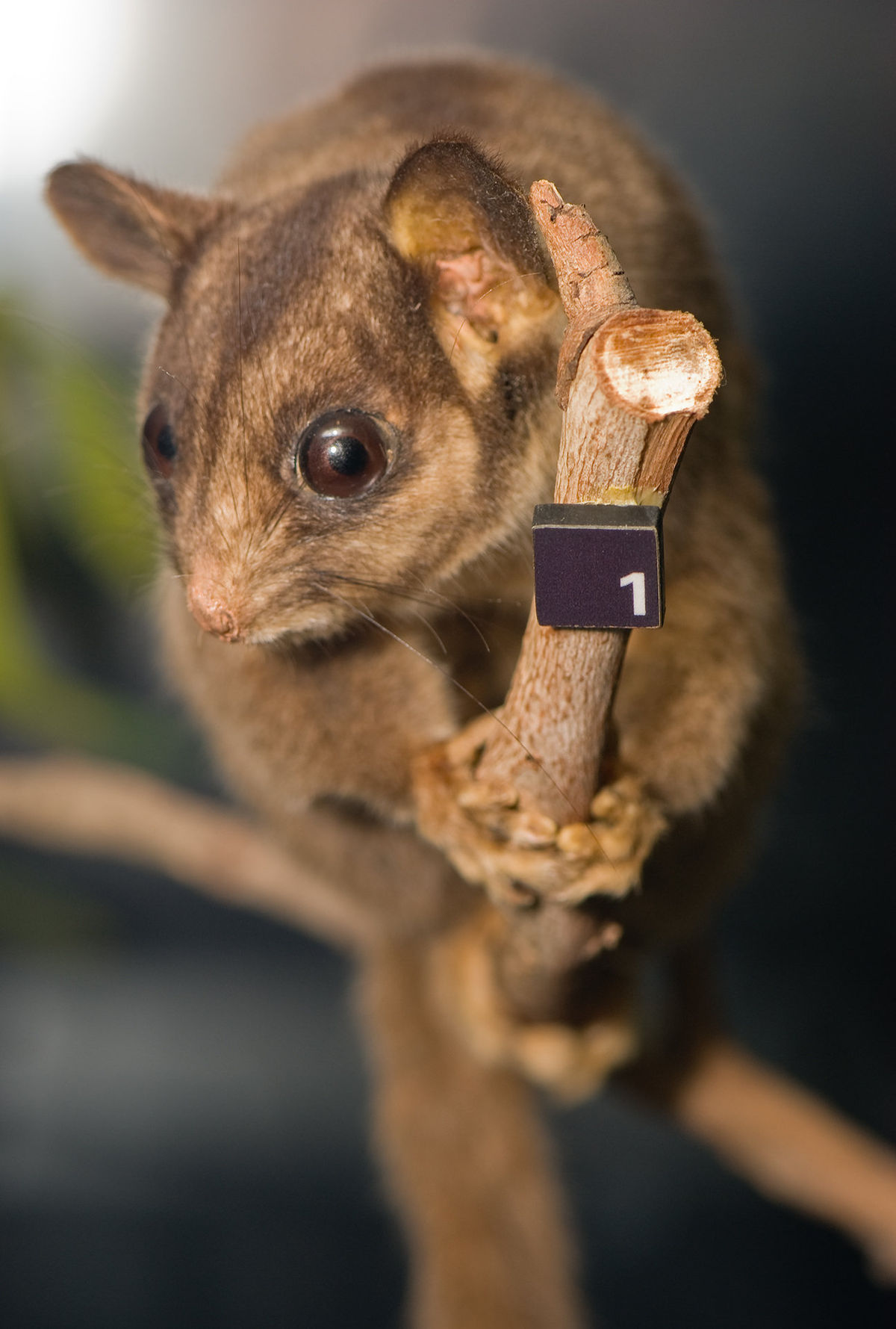Leadbeater's possum
(Gymnobelideus leadbeateri)

Description
Leadbeater's possum (Gymnobelideus leadbeateri) is a critically endangered possum largely restricted to small pockets of alpine ash, mountain ash, and snow gum forests in the Central Highlands of Victoria, Australia, north-east of Melbourne. It is primitive, relict, and non-gliding, and, as the only species in the petaurid genus Gymnobelideus, represents an ancestral form. Formerly, Leadbeater's possums were moderately common within the very small areas they inhabited; their requirement for year-round food supplies and tree-holes to take refuge in during the day restricts them to mixed-age wet sclerophyll forest with a dense mid-story of Acacia. The species was named in 1867 after John Leadbeater, the then taxidermist at the Museum Victoria. They also go by the common name of fairy possum. On 2 March 1971, the State of Victoria made the Leadbeater's possum its faunal emblem. Leadbeater's possum is thought to have evolved about 20 million years ago. It was not discovered until 1867 and was originally known only through five specimens, the last one collected in 1909. From that time on, the fear that it might be extinct gradually grew into near-certainty after the swamps and wetlands in Australia around Bass River in south-west Gippsland were drained for farming in the early 1900s. By the time of the 1939 Black Friday fires, the species was thought to have been extinct. Then, on 3 April 1961, a member of the species was rediscovered by naturalist Eric Wilkinson in the forests near Cambarville, and the first specimen in more than 50 years was captured later in the month. In 1961, a colony was discovered near Marysville. Extensive searches since then have found the existing population in the highlands. However, the availability of suitable habitat is critical: forest must be neither too old nor too young, with conservation efforts for Leadbeater's possum involving protection of remaining old-growth stands, and maintenance of younger stands that are allowed to attain hollow-bearing age. The combination of 40-year-old regrowth (for food) and large dead trees left still standing after the fires (for shelter and nesting) allowed the Leadbeater's possum population to expand to an estimated peak of about 7500 in the early 1980s. From its peak in the 1980s, the Leadbeater's possum population was expected to further decline rapidly, by as much as 90%, due to a habitat bottleneck. The population has dropped sharply since 1996.
Taxonomic tree:







